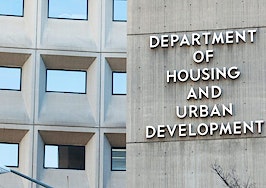- There is a growth in extremely low-income renter households and the need for quality, affordable housing programs.
- Affordable housing programs have floundered, and we need support to develop programs that meet the demands of those in need of housing and support.
- Society needs to reassess the stigmas associated with affordable housing to create programs that help communities flourish, as has been shown by successful affordable housing developments.
Home. It’s a word we often toss around without a second thought. How many times this week have you filled in a form with your home address, entered it as a destination in your GPS or texted a loved one with, “Are you home yet?”
For many of us, these actions are rote. We seldom pause to consider the gravity of what “home” represents — safety, community, stability, a foundation for opportunity and growth — things that an estimated 19 million families across the United States might never get to experience.
Between 2000 and 2013, the number of extremely low-income renter households increased 38 percent — a telling statistic that demonstrates the widening gap between quality, affordable housing programs and their ability to meet the demands of the population in need.
[Tweet “Between 2000-2013, the number of extremely low-income renter households increased 38%.”]
Considering the most recent assessment by the Public and Affordable Housing Research Corporation, this disparity is not likely to be resolved soon.
There is a multitude of reasons why these programs continue to flounder, not the least of which is a lack of funding. However, there’s an influence at work that is even more powerful than money, primarily because it plays a crucial role in both the allocation of funds and the community buy-in required to put those funds to good use — that is, of course, stigma.
Stigma and myth
The stigmas associated with affordable (AKA low-income) housing are pervasive and detrimental to the success of housing programs, as well as the people they aim to help.
Common concerns regarding affordable housing, such as increased crime rates, depressed property values, unflattering aesthetics and unwanted residential density, can push developments into legislative holding patterns or — even worse — further and further away from integration with active, flourishing communities.
A simple look at the facts can ease many fear-driven stigmas. Research suggests that the creation of affordable housing in low-income neighborhoods can increase the value of surrounding properties, decrease crime rates and increase racial diversity.
[Tweet “Affordable housing in low-income neighborhoods can increase the value of surrounding properties.”]
The common misconception that affordable housing is poor quality or aesthetically unpleasing is also unfounded. Affordable developments are subject to the same design and construction standards as market-rate housing and often must meet even higher standards imposed by funding sources.
The pressing need for affordable housing is not a problem that cities can develop their way out of. Rather, it requires a holistic view of the communities in which affordable housing is developed.
The transition to economic self-reliance and market-rate housing depends on healthy, supportive communities that are active representations of success.
The best recipe
A mixed community (with varied income levels, population groups, generations, etc.) provides the perspectives and real-life examples of growth needed to empower individuals to recognize their own potential for achievement.
A recent Harvard study found that moving families with young children into neighborhoods with lower poverty rates reduced the intergenerational persistence of poverty and ultimately generated positive returns for taxpayers. These communities can only exist and thrive through thoughtful, intentional design.
It’s important for those of us fortunate enough to have a home to recognize that it’s more than just a place to live; it’s the foundation for well-being in every area of life.
Although more affordable housing is needed, the answer is not always more units; it’s about being more effective with what we have. It’s about using affordable housing as a vehicle to invest in the value of every individual and his or her ultimate contribution to the community as a whole.
Home should be a safe, stable place to gather strength, dream about a better future, develop new relationships and confidently pursue opportunities for growth. Communities that nurture this sense of belonging and empowerment help make economic self-reliance a reality for more and more people — and housing is just the beginning.
[Tweet “Home should be a safe, stable place to gather strength and dream about a better future.”]
Patricia Whitaker is the CEO of Innovative Housing Opportunities. Connect with Innovative Housing Opportunities on LinkedIn.




